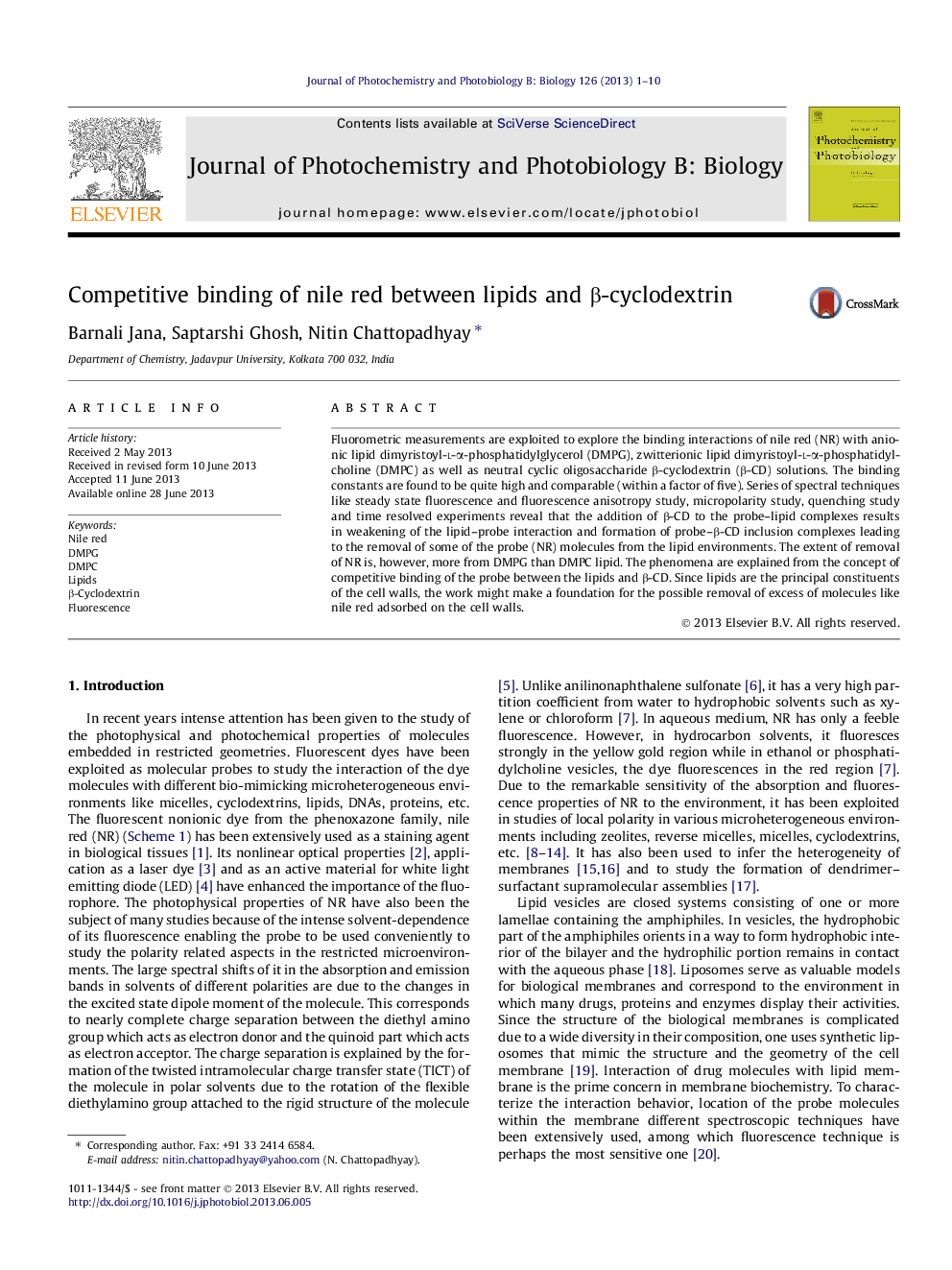| Article ID | Journal | Published Year | Pages | File Type |
|---|---|---|---|---|
| 30488 | Journal of Photochemistry and Photobiology B: Biology | 2013 | 10 Pages |
•Fluorescence of nile red (NR) has been investigated in DMPG and DMPC lipids as well as in β-cyclodextrin.•The determined binding constants of NR are comparable in the corresponding environments.•Addition of β-CD leads to dissociation of NR—lipid complexes and expulsion of NR molecules by making NR—β-CD inclusion complexes.•The formation of NR—β-CD inclusion complexes are higher in case of DMPG than DMPC.
Fluorometric measurements are exploited to explore the binding interactions of nile red (NR) with anionic lipid dimyristoyl-L-α-phosphatidylglycerol (DMPG), zwitterionic lipid dimyristoyl-L-α-phosphatidylcholine (DMPC) as well as neutral cyclic oligosaccharide β-cyclodextrin (β-CD) solutions. The binding constants are found to be quite high and comparable (within a factor of five). Series of spectral techniques like steady state fluorescence and fluorescence anisotropy study, micropolarity study, quenching study and time resolved experiments reveal that the addition of β-CD to the probe–lipid complexes results in weakening of the lipid–probe interaction and formation of probe–β-CD inclusion complexes leading to the removal of some of the probe (NR) molecules from the lipid environments. The extent of removal of NR is, however, more from DMPG than DMPC lipid. The phenomena are explained from the concept of competitive binding of the probe between the lipids and β-CD. Since lipids are the principal constituents of the cell walls, the work might make a foundation for the possible removal of excess of molecules like nile red adsorbed on the cell walls.
Graphical abstractFigure optionsDownload full-size imageDownload as PowerPoint slide
